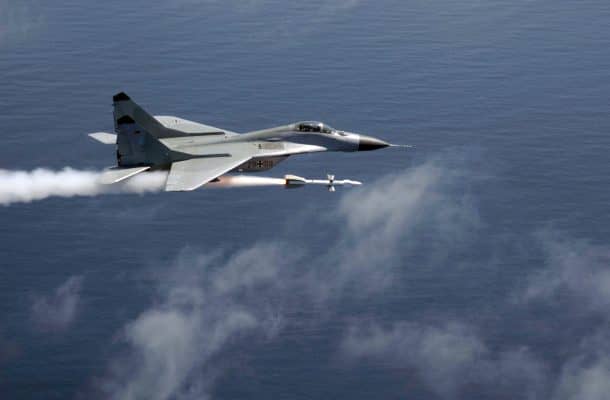A NATO Eurofighter 2000 was on air patrol near the Russian border with Estonia when it accidentally fired an air-to-air missile. The plane returned to Siauliai Air Base in Lithuania, but the missile is MIA. The location of the incident is 40km north of Tartu in Estonia. The Spanish authorities are warning people to not go near “something that looks like a missile.” The investigation is going on how such an advanced fighter jet can make such a big mistake.
Even though the Eurofighter is a small aircraft, a pilot cannot just lean on a control stick or press a button to fire a missile mistakenly. The Spanish plane has an armament control system (ACS) in place, which is a part of the airplane’s brain that controls missile shots, among other things in the plane. The fighter’s flight manual has made it pretty clear that an air-to-air missile shot requires some complex interplay between pilot, warplane, and ammunition. The aircraft passes data about the target’s direction and speed to the missile before launch.

The user’s guide also makes it clear that a clean shot is intentional and is also governed by a process. The manual states, “The system calculates the minimum and two maximum weapon ranges, which are marked on the scale as horizontal lines. The two maximum ranges differ as one range is based on the target remaining at 1g while the other assumes that the target will perform an escape maneuver.” However, the pilot also needs to take a clear short at times which is called shooting a missile in “boresight mode.” The Eurofighter can do this according to the official literature. “A gapped circle of fixed diameter, having six dashes and centered on the LFD, indicates the area in which the AMRAAM will search when launched in visual mode (7.5° around the boresight, known as the acquisition cone.”
Firing missile like this a dangerous move and is only used when a pilot is followed by a hostile aircraft and the missile locks on the first threat that it detects. The idea that a NATO pilot took these steps by accident is very unusual. The incident will be researched and scrutinized while investigators are looking for the human error, flight control computer bugs, and other potential causes. The outcome will definitely help NATO to improve its missile firing protocols.


